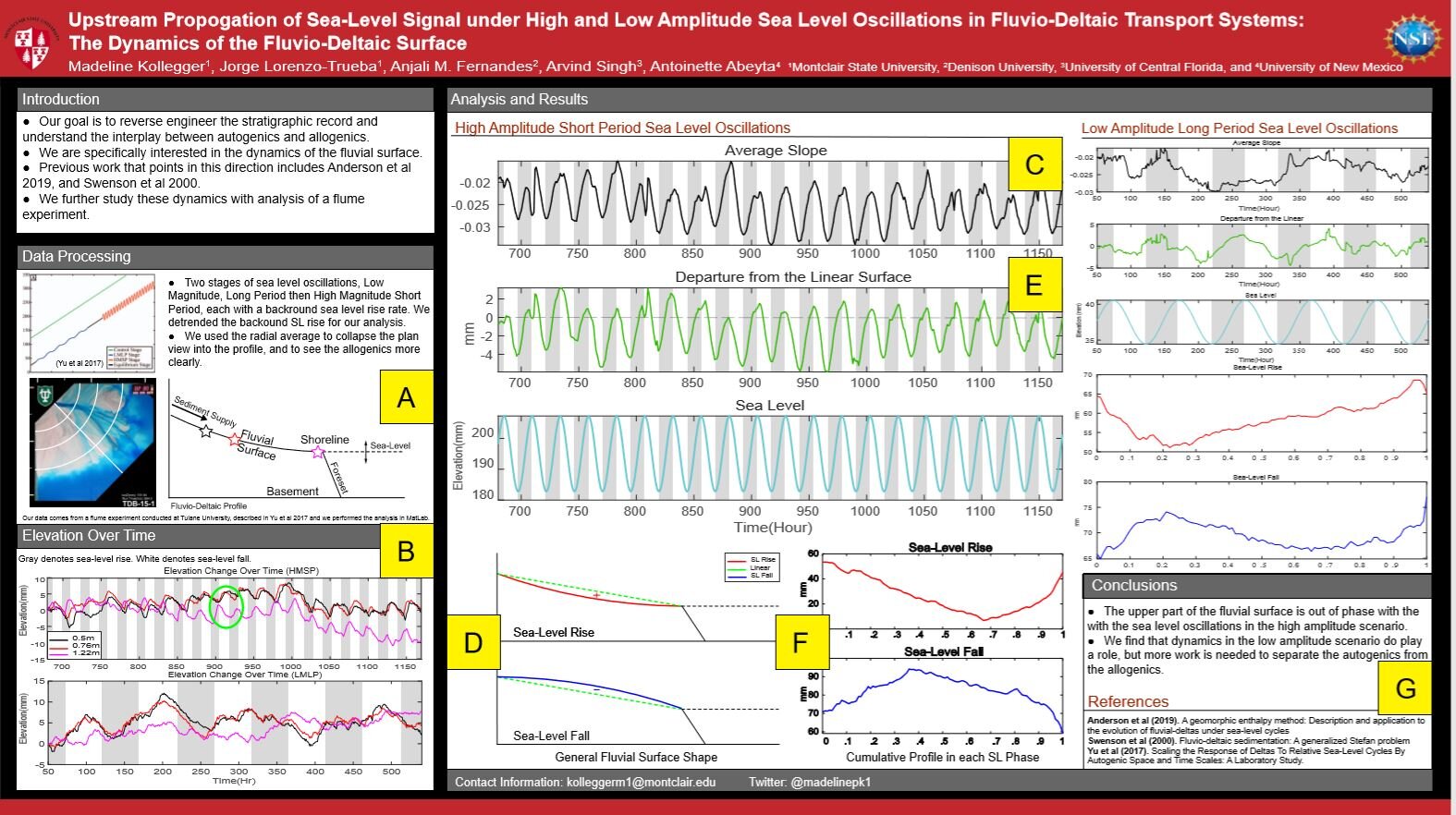
Fluvio-Deltaic Systems
Fluvial deltas (also called river deltas) are dynamic features of the world’s coastlines and their stratigraphic architecture can store valuable information of past environmental conditions and sea-level changes.
Our work seeks to understand how changing sea level and organic sediment dynamics will influence those fluvio-deltaic environments.
We approach these problems using simple numerical models, flume experiment analysis, and connections to field processes.
Find the code for these models linked in the GitHub repository here.
The Mississippi River Delta is a classic example of a fluvially dominated delta.

Organics and Deltaic Architecture
Primary Researcher: Norjmaa Khosbaatar
She uses a numerical model to provide insight into how organic matter accumulation alters deltaic architecture. Her work allows for a better understanding of how coastal-plain depositional features record changes in sea level variations.
Posters, Presentations and Other Media
UPSTREAM PROPAGATION OF SEA-LEVEL SIGNAL UNDER HIGH AND LOW AMPLITUDE SEA LEVEL OSCILLATIONS IN FLUVIO-DELTAIC TRANSPORT SYSTEMS: THE DYNAMICS OF THE FLUVIO-DELTAIC SURFACE
KOLLEGGER, Madeline(1), LORENZO-TRUEBA, Jorge(1), FERNANDES, Anjali M.(2), SINGH, Arvind(3) and ABEYTA, Antoinette(4), (1)Earth and Environmental Sciences, Montclair State University(2)Geosciences, Denison University, (3)Civil, Environmental, and Construction Engineering, University of Central Florida (4)Math and Science Division, University of New Mexico Gallup
Fluvial deltas are dynamic features of the world’s coastlines and their stratigraphic architecture can store valuable information of past environmental conditions and sea-level changes. However, to reconstruct past environmental and sea-level signals, we need to better understand the interplay between internal (autogenic) and external (allogenic) processes. Here we focus specifically on developing a theoretical framework to separate autogenic processes, such as channel avulsion, from the long-profile dynamics of the fluvio-deltaic surface under sea-level cycles in the sedimentary record. To do this, we analyze an experimental delta data-set produced by the Tulane Delta Basin in which the fluvio-deltaic environment was exposed to Low Magnitude, Long Period (LMLP) sea-level cycles, followed by High Magnitude, Short Period (HMSP) sea-level cycles.
Our analysis of these experiments demonstrates that the dynamics of the fluvio-deltaic profile, including changes in its curvature and relief, play a significant role on the response of the fluvio-deltaic environment. In general, we observe that during the sea-level rise phase, the strike-averaged profile relief and concavity decreases, leading to a substantial transport of sediment from the upper portion of the profile to the nearshore region. This process results in a reduction of the sedimentation rate in the upstream portion of the profile during the first half of the sea-level rise phase. In contrast, the strike-averaged profile relief and concavity increases leading to an increase in sedimentation rate in the upstream portion of the profile during the first half of the sea-level fall phase
While both the HMSP and the LMLP share similar dynamics of the fluvial surface, the magnitude of the curvature changes are linked to the amplitude of the sea-level oscillations. As expected, there is an increase in relative importance of autogenic processes such as avulsions, and the changes in flow type when comparing the LMLP with the HMSP making the sea-level and profile dynamics signals more difficult to separate in the LMLP. Overall, these experimental observations match our theoretical framework, and therefore suggest that changes in the upper portion of the fluvio-deltaic surface are not necessarily a good indicator of contemporaneous sea-level changes.
This poster and abstract was originally presented at GSA Connects Online 2020.


